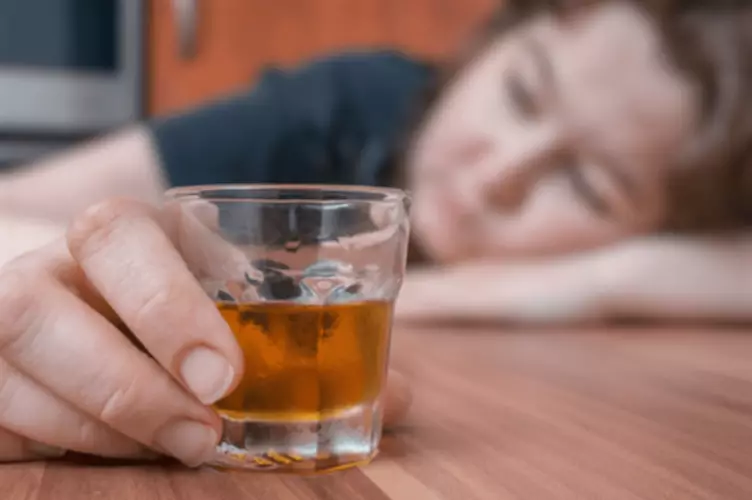Many professionals across the country and all types of providers joined the webinar and hundreds more asked for the recording. We were unable to get to all the questions that were asked during the webinar, so we created this blog post to address everything our audience brought up. For an overview of the program, read the Recovery Residence fact sheet and Recovery Residence FAQ. Email the HCA Recovery Residence team for information or questions regarding the loan application process. Recovery homes on the registry and those working towards inclusion on the registry can apply for a loan up to $4,000 in order to help with operating costs. Recovery homes working towards inclusion on the registry must do so via accreditation by the Washington Alliance of Quality Recovery Residences.
Health and Social Consequences
That being said and when opportunities arise, resident leaders are recruited as a House Manager or other staff members. In turn, they typically receive discounted rent and/or a salary in exchange for fulfilling their staffing roles and responsibilities. Recovery housing researcher Dr. Leonard Jason has written about other measures, which are found to have correlation with long-term outcomes, including self-efficacy and psychological sense of community. Rather than using such a tool as a predictor of long-term recovery outcomes, a recovery capital assessment may be better used as barometer as to the progress of an individual in their recovery. It is often used as a self-assessment, allowing an individual to reflect on where they are and what they want to focus on in a person-driven recovery action plan.
Powhatan rejects recovery home, faces federal fair housing lawsuit – Progress Index
Powhatan rejects recovery home, faces federal fair housing lawsuit.
Posted: Thu, 21 Mar 2024 07:00:00 GMT [source]
Products and services
Contact any of our admissions teams at any NUWAY® intensive outpatient location or our Recovery Residence Resource team at RR@nuway.org to discuss your circumstances and needs. Improving dissemination of research findings will be a critical component of influencing policy. It will not be enough to publish results in professional journals and feel the work of dissemination is complete. For example, we need better dissemination of the public health consequences of incarceration for inmates, families, and communities.

First Step Recovery
The purpose of the paper is to describe criminal justice reform policy as it relates to drug offenses and highlight the important role that recovery residences can play in implementation of the reforms. The paper is not intended to be a comprehensive literature review of criminal justice reform, but selected literature is cited to describe the history and consequences of incarceration as a response to drug offenses and recently implemented alternatives to incarceration. The structure of the paper follows a sequential progression beginning with a brief overview of the history of increased incarceration in the U.S., particularly for drug-related offenses.
- That interest hasn’t been strong enough to create a provider base sufficient to sustain an affiliate organization.
- However, there are no federal funds specifically allocated towards recovery housing at this time.
- However, attorney general Sessions has not put forth an aggressive, science-based plan to combat opioid problems among criminal justice involved persons.
- In addition, there are questions needing to be addressed about the types of previously incarcerated persons who might do best in a residence designated for previously incarcerated persons versus a generic residence with a mix of different types of residents.
- However, one study of 245 residents living in level two sober living houses (SLHs) in northern California found 29% of the sample was referred through the criminal justice system (Polcin, Korcha, Bond, & Galloway, 2010).
- Every process is transparent, including the household bills, which are paid by check.
- NARR and these organizations collectively support over 25,000 persons in addiction recovery who are living in over 2,500 certified recovery residences throughout the United States.
- If you are interested in your recovery home being included in the recovery residence registry, please email the HCA recovery residence team.
- In 2011, California enacted a state law (AB109), which transitions persons in the state prison system to local jurisdictions, often with reduced incarceration periods (Lofstrom & Martin, 2015).
- A directory of Oxford Houses in Texas is accessible on the Oxford House website.
However, questions arise about where persons on parole or probation will live and what types of support will be necessary for them to sustain long-term recovery and successful functioning in the community. In these gratitude house sober living residence residences, residents are both recipients and sources of recovery support. Residents are expected to be active participants in developing and sustaining a recovery supportive culture and family-like community.

There are numerous approaches to addressing these issues; a sustainability plan is crucial to providing a stable and supportive living environment. To lower capital outlay, many providers choose to rent property from a landlord, who values long-term tenants and/or values supporting recovery. Overall, the need to identify what is and what is not a recovery residence was a driving factor behind the development of the NARR standard. To be considered a recovery residence, a provider or program needs to meet a wide range of standards. The social model of recovery and the cultivation of a psychological sense of community focuses on rewarding individuals and/or offering individuals the opportunity to have rewarding and meaningful experiences. If residents are not getting something out of the experience, they disengage and the therapeutic culture collapses.
- Petteruti and Walsh (2008) noted that affordable housing is often difficult to find for persons released from local jails because they often lose their jobs when they are incarcerated.
- The National Alliance for Recovery Residences (NARR) is a 501-c3 nonprofit organization dedicated to expanding the availability of well-operated, ethical and supportive recovery housing.
- Butch Lewis works with the certifying agency, Colorado Association on Recovery Residences.
The majority of the participants in the focus group talked about being advised to move into a https://ecosoberhouse.com/ upon completion of inpatient treatment. This advice and the decision to move into sober living, even if it was not explicitly recommended, stemmed from a recognition of relapse risk in their home environment, and that they needed additional support that could be provided in a sober living environment. The residences are required to obtain certification from the Colorado Association of Recovery Residences to operate in the state and receive referrals from health care providers or facilities for individuals in need of recovery support services.
Helping to secure stable housing first among homeless individuals can improve mental health and quality of life
- Yes, individuals get to apply all the skills they’ve developed in treatment to real-world situations.
- However, one of their drawbacks may be that unlike Oxford Houses and SLHs, many of them have a maximum length of stay.
- A person will only get kicked out if they relapse, don’t pay their equal share of expenses, or behave disruptively.
